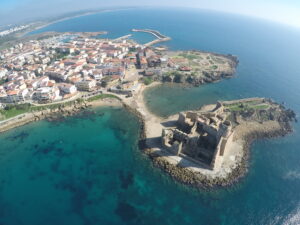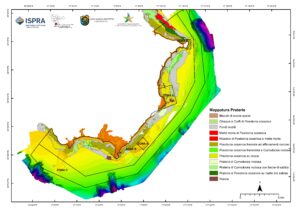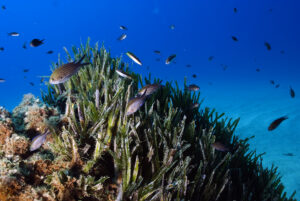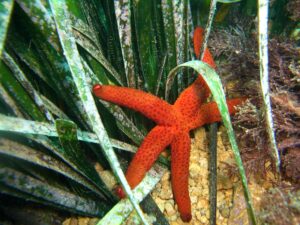The Marine Protected Area “Capo Rizzuto” was established on December 12, 1991, and is one of the largest Marine Protected Areas in Europe. It covers the stretch of sea in front of the territories of the municipalities of Crotone and Isola Capo Rizzuto, encompassing an area of about 14,721 hectares and extending along 42 kilometers of coastline, with seabeds reaching the -100 meter bathymetric line. The “Capo Rizzuto” MPA stands out for the particular beauty of its coastal landscapes, both above and below the water, for its rich biodiversity, and for the exceptional clarity of its seawater (fig. 1).

Within the “Capo Rizzuto” MPA, thanks to the high quality of the seawater, lie the most extensive Posidonia oceanica meadows in the Calabria region. These seabeds represent a unique natural environment that must be protected and preserved. The underwater area includes approximately 744.31 hectares of marine seagrass vegetation, of which 266.63 hectares are Posidonia on rocky substrates, 34 hectares on Matte (a biological substrate formed by the plant’s accumulation), 101.56 hectares on sandy seabeds, and 123.83 hectares of Cymodocea nodosa meadows (fig. 2).

The protection and conservation of these seagrass meadows are justified not only by their high ecological and environmental value but also for economic reasons. These meadows are a primary asset of Mediterranean coastal waters due to both the surface area they cover (ranging from 20% to 50% of seabeds between 0 and 50 meters in depth) and their essential biological role in maintaining the geological, ecological, and environmental balance of coastlines, as well as in supporting related economic activities.
Posidonia oceanica meadows provide critical ecosystem services, meaning a range of benefits that natural systems generate for humans. They act as true underwater vegetative barriers that facilitate the settling and sedimentation of suspended particles in the water column, effectively becoming “sediment traps.” These meadows are crucial for oxygenating the seabed, sequestering CO2, and contributing to high biological productivity by producing organic matter. Additionally, they serve as important breeding grounds for numerous commercially valuable species, including crustaceans, cephalopods, and fish. Finally, their contribution to tourism and recreational activities should not be overlooked, as they help maintain the quality and transparency of coastal waters (figs. 3, 4).


Credits
ISPRA – Istituto Superiore per la Protezione e la Ricerca Ambientale